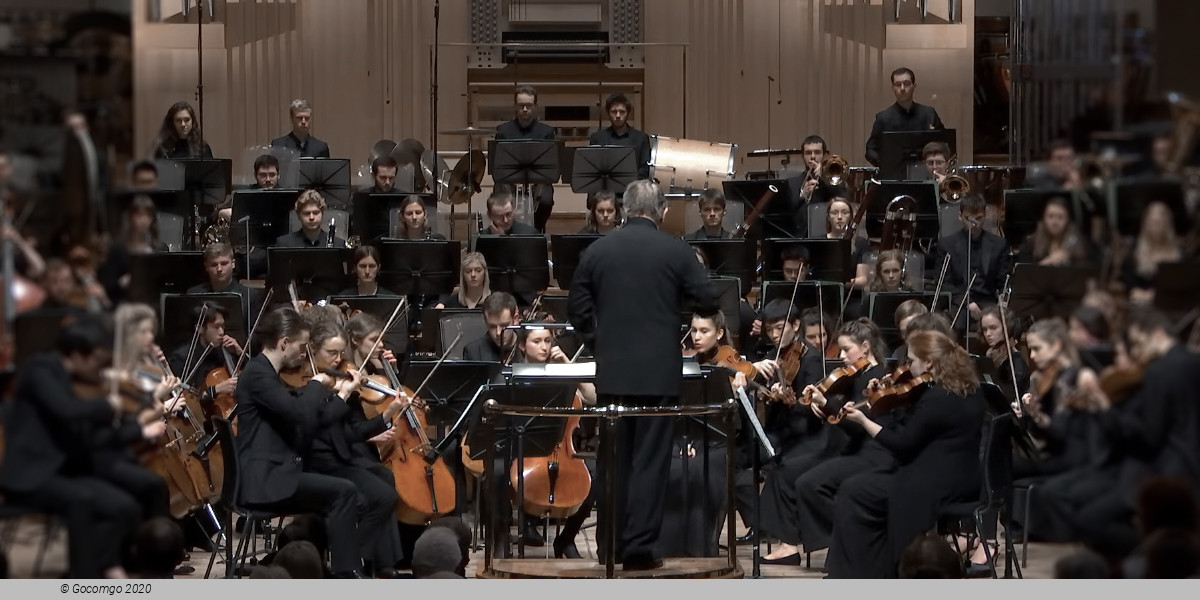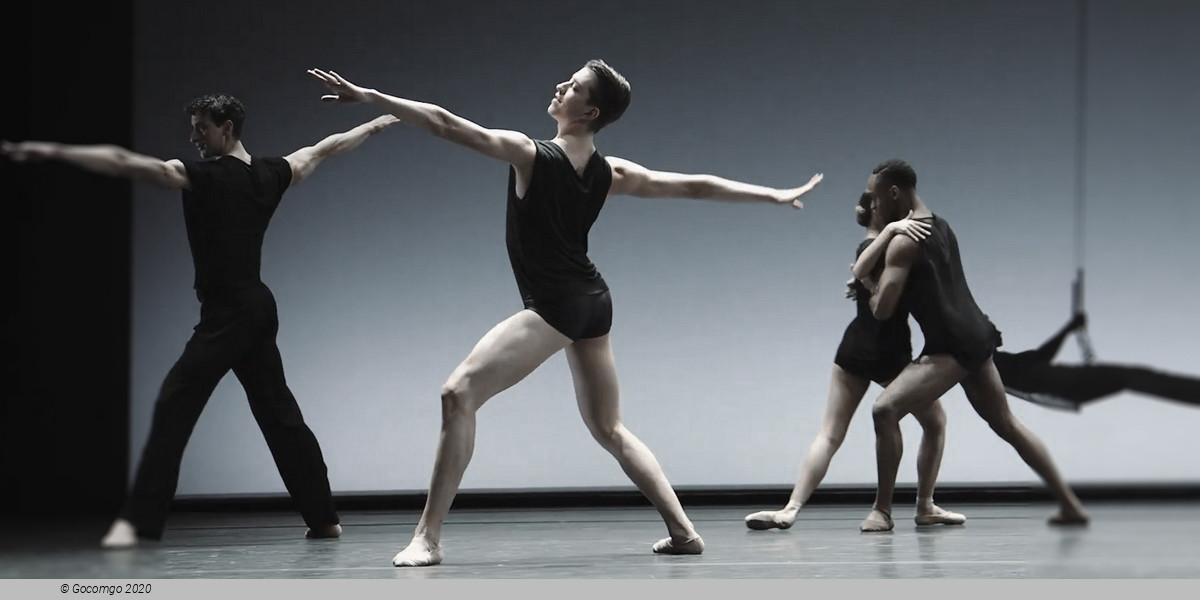Events11 results
About
Charles Edward Ives (October 20, 1874 – May 19, 1954) was an American modernist composer, being one of the first American composers of international renown. Previously, his music was largely ignored during his life, and many of his works went unperformed for many years, but later the quality of his music was recognized and he came to be regarded as an "American original". He was also among the first composers to engage in a systematic program of experimental music, with musical techniques including polytonality, polyrhythm, tone clusters, aleatory elements, and quarter tones. His experimentation foreshadowed many musical innovations that were later more widely adopted during the 20th century. Hence, he is often regarded as the leading American composer of art music of the 20th century.
As noted, sources of Ives' tonal imagery are hymn tunes and traditional songs; he also incorporated melodies of the town band at holiday parade, the fiddlers at Saturday night dances, patriotic songs, sentimental parlor ballads, and the melodies of Stephen Foster.
Ives was born in Danbury, Connecticut, on October 20, 1874, the son of George (Edward) Ives (August 3, 1845 – November 4, 1894), a U.S. Army bandleader in the American Civil War, and his wife, Mary Elizabeth (Parmelee) Ives (January 2, 1849 or 1850 – January 25, 1929). The Iveses were one of Danbury’s leading families, and they were prominent in business and civic improvement and active in social causes, such as the abolition of slavery.
George Ives directed bands, choirs, and orchestras, and taught music theory and a number of instruments. Charles got his influencesby sitting in the Danbury town square and listening to his father's marching band and other bands on other sides of the square simultaneously. His father has taught him and his brother (Joseph) Moss Ives music (February 5, 1876 – April 8, 1939)[citation needed], teaching harmony and counterpoint and guided his first compositions; George took an open-minded approach to theory, encouraging him to experiment in bitonal and polytonal harmonizations. It was from him that Ives also learned the music of Stephen Foster. He became a church organist at the age of 14 and wrote various hymns and songs for church services, including his Variations on "America", which he wrote for a Fourth of July concert in Brewster, New York. It is considered challenging even by modern concert organists, but he famously spoke of it as being "as much fun as playing baseball", a commentary on his own organ technique at that age.
Ives moved to New Haven, Connecticut in 1893, enrolling in the Hopkins School, where he captained the baseball team. In September 1894, Ives entered Yale University, studying under Horatio Parker. Here he composed in a choral style similar to his mentor, writing church music and even an 1896 campaign song for William McKinley. On November 4, 1894, his father died, a crushing blow to him, but to a large degree he continued the musical experimentation he had begun with him. His brother Moss later became a lawyer.
At Yale, Ives was a prominent figure; he was a member of HeBoule, Delta Kappa Epsilon (Phi chapter) and Wolf's Head Society, and sat as chairman of the Ivy Committee. He enjoyed sports at Yale and played on the varsity American football team. Michael C. Murphy, his coach, once remarked that it was a "crying shame" that he spent so much time at music as otherwise he could have been a champion sprinter. His works Calcium Light Night and Yale-Princeton Football Game show the influence of college and sports on Ives' composition. He wrote his Symphony No. 1 as his senior thesis under Parker's supervision.
Ives continued his work as a church organist until May 1902. Soon after he graduated from Yale in 1898, he started work in the actuarial department of the Mutual Life Insurance company of New York. In 1899, Ives moved to employment with the insurance agency Charles H. Raymond & Co., where he stayed until 1906. In 1907, upon the failure of Raymond & Co., he and his friend Julian Myrick formed their own insurance agency Ives & Co., which later became Ives & Myrick, where he remained until he retired. During his career as an insurance executive and actuary, Ives devised creative ways to structure life-insurance packages for people of means, which laid the foundation of the modern practice of estate planning. His Life Insurance with Relation to Inheritance Tax, published in 1918, was well received. As a result of this he achieved considerable fame in the insurance industry of his time, with many of his business peers surprised to learn that he was also a composer. In his spare time he composed music and, until his marriage, worked as an organist in Danbury and New Haven as well as Bloomfield, New Jersey and New York City.
In 1907, Ives suffered the first of several "heart attacks" (as he and his family called them) that he had throughout his life. These attacks may have been psychological in origin rather than physical. Following his recovery from the 1907 attack, Ives entered into one of the most creative periods of his life as a composer.
In 1908 he married Harmony Twichell, daughter of Congregational minister Joseph Twichell and his wife Julia Harmony Cushman. The young couple moved into their own apartment in New York.
Ives had a remarkably successful career in insurance. He also continued to be a prolific composer until he suffered another of several heart attacks in 1918, after which he composed very little. He wrote his last piece, the song "Sunrise", in August 1926. In 1922, Ives published his 114 Songs, which represents the breadth of his work as a composer—it includes art songs, songs he wrote as a teenager and young man, and highly dissonant songs such as "The Majority."
According to his wife, one day in early 1927 Ives came downstairs with tears in his eyes. He could compose no more, he said; "nothing sounds right." There have been numerous theories advanced to explain the silence of his late years. It seems as mysterious as the last several decades of the life of Jean Sibelius, who stopped composing at almost the same time. While Ives had stopped composing, and was increasingly plagued by health problems, he continued to revise and refine his earlier work, as well as oversee premieres of his music.
After continuing health problems, including diabetes, in 1930 he retired from his insurance business. Although he had more time to devote to music, he was unable to write any new music. During the 1940s he revised his Concord Sonata, publishing it in 1947 (an earlier version of the sonata and the accompanying prose volume, Essays Before a Sonata[22] were privately printed in 1920).
Ives died of a stroke in 1954 in New York City. His widow, who died in 1969 at age 92, bequeathed the royalties from his music to the American Academy of Arts and Letters for the Charles Ives Prize.
Musical career
Ives' career and dedication to music began when he started playing drums in his father's band at a young age. Ives published a large collection of songs, many of which had piano parts. He composed two string quartets and other works of chamber music, though he is now best known for his orchestral music. His work as an organist led him to write Variations on "America" in 1891, which he premiered at a recital celebrating the Fourth of July.
In 1906, Ives composed the first radical musical work of the twentieth century, "Central Park in the Dark". He composed two symphonies, as well as "The Unanswered Question" (1908), written for the unusual combination of trumpet, four flutes, and string quartet. "The Unanswered Question" was influenced by the New England writers Ralph Waldo Emerson and Henry David Thoreau.
Around 1910, Ives began composing his most accomplished works, including the Holiday Symphony and Three Places in New England. The Piano Sonata No. 2, Concord, Mass., known as the Concord Sonata, was one of his most remarkable pieces. He started work on this in 1911 and completed most of it in 1915. However, it was not until 1920 that the piece was published. His revised version was not released until 1947. This piece contains one of the most striking examples of his experimentation. In the second movement, he instructed the pianist to use a 14 3⁄4 in (37 cm) piece of wood to create a massive cluster chord. The piece also amply demonstrates Ives' fondness for musical quotation: the opening bars of Ludwig van Beethoven's Symphony No. 5 are quoted in each movement. Sinclair's catalogue also notes less obvious quotations of Beethoven's Hammerklavier Sonata and various other works.
Another remarkable piece of orchestral music Ives completed was his Fourth Symphony. He worked on this from 1910 to 1916. This symphony is notable for its complexity and over-sized orchestra. It has four movements. A complete performance was not given until 1965 (i.e. half a century after it was completed and over a decade after Ives's death).
Ives left behind material for an unfinished Universe Symphony, which he was unable to complete despite two decades of work. This was due to his health problems as well as his shifting ideas of the work.



